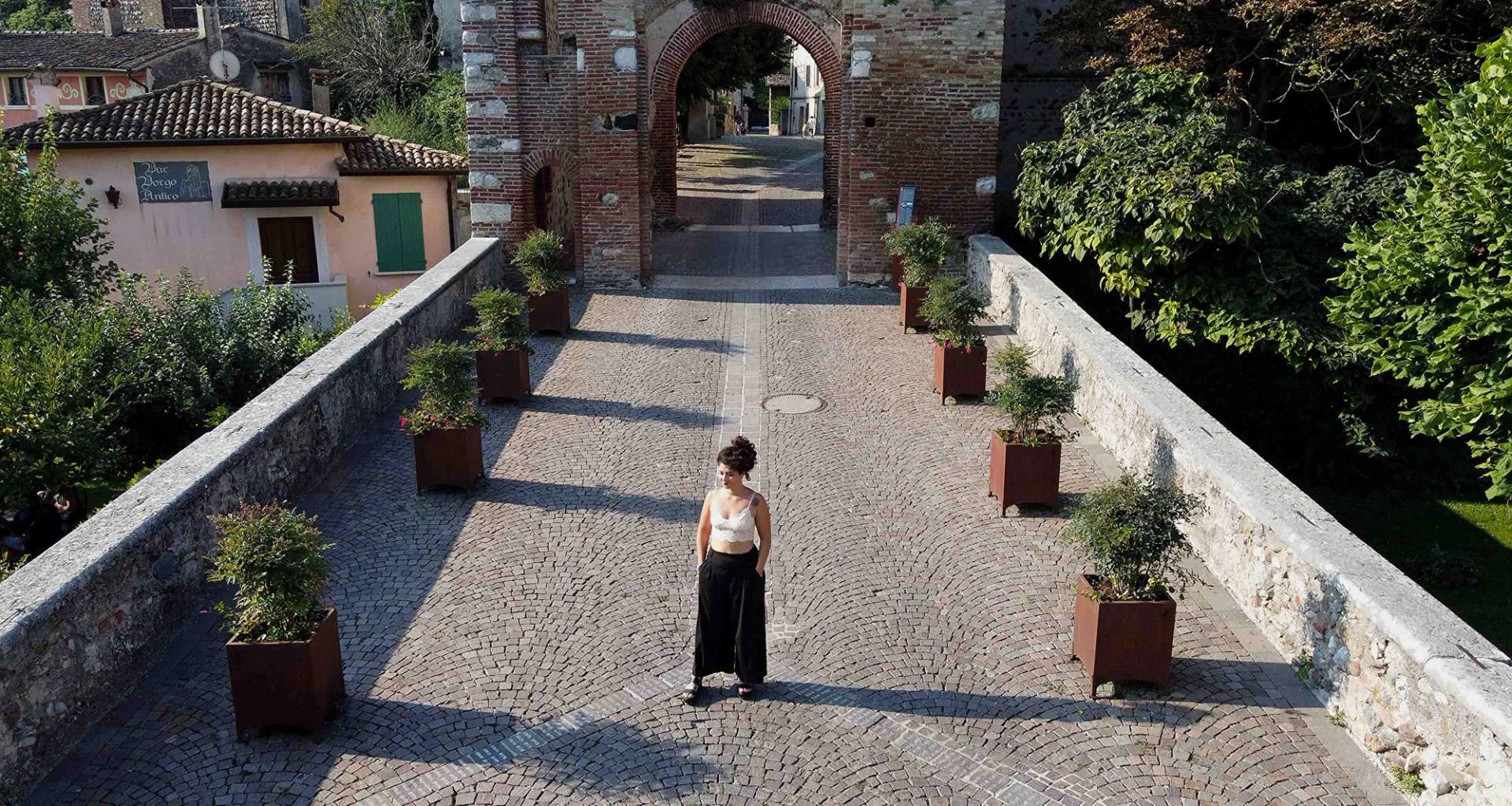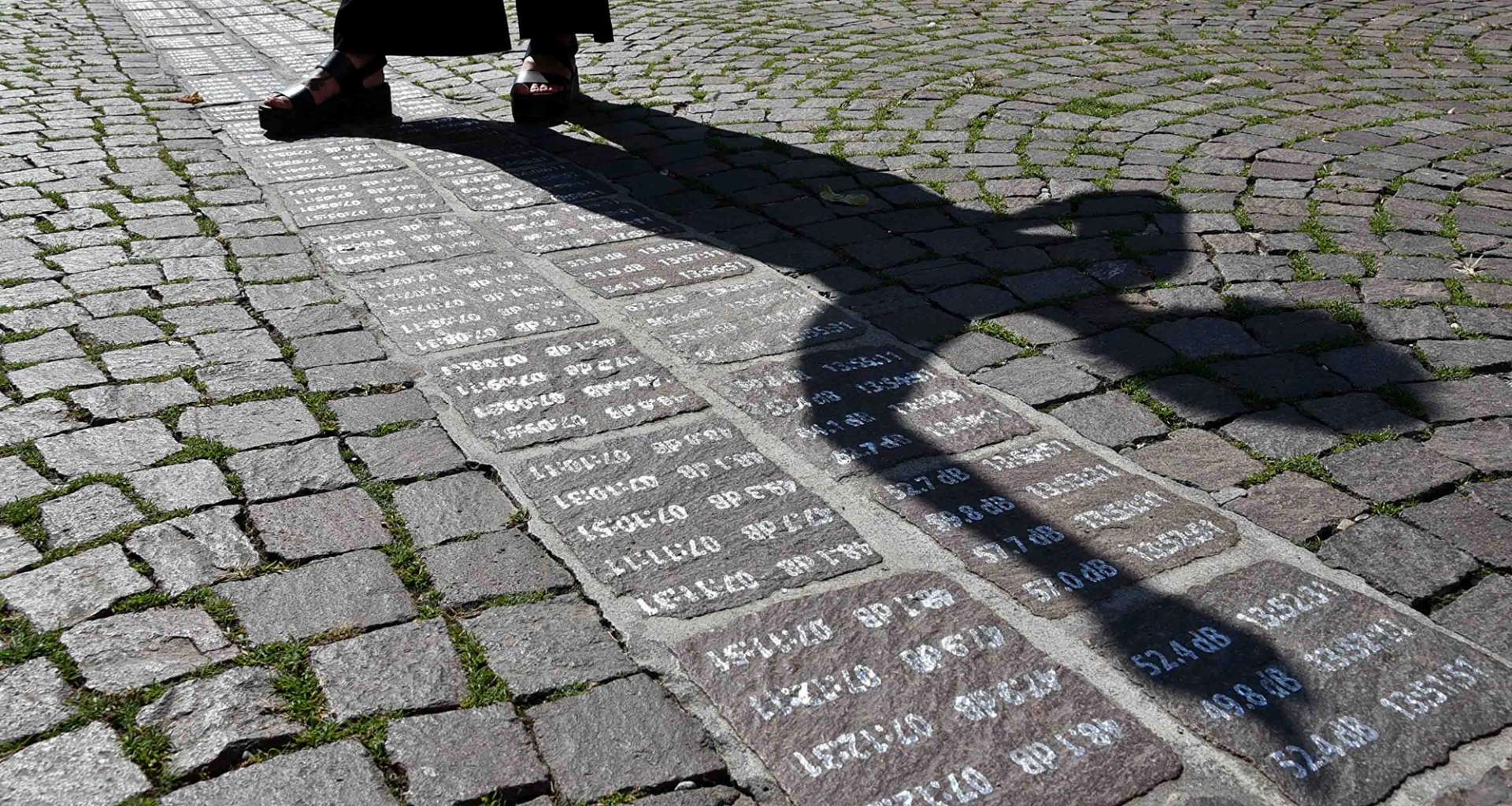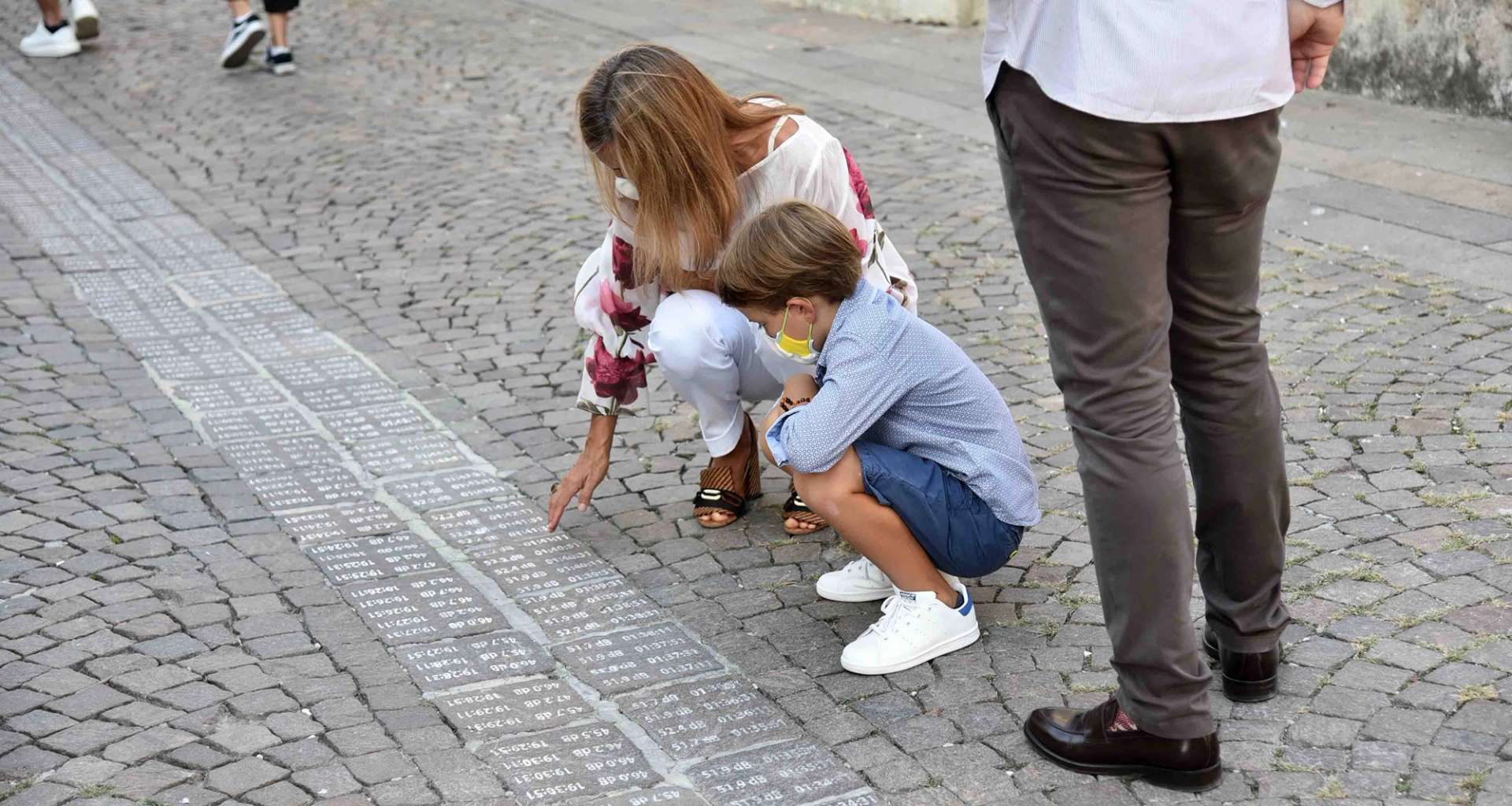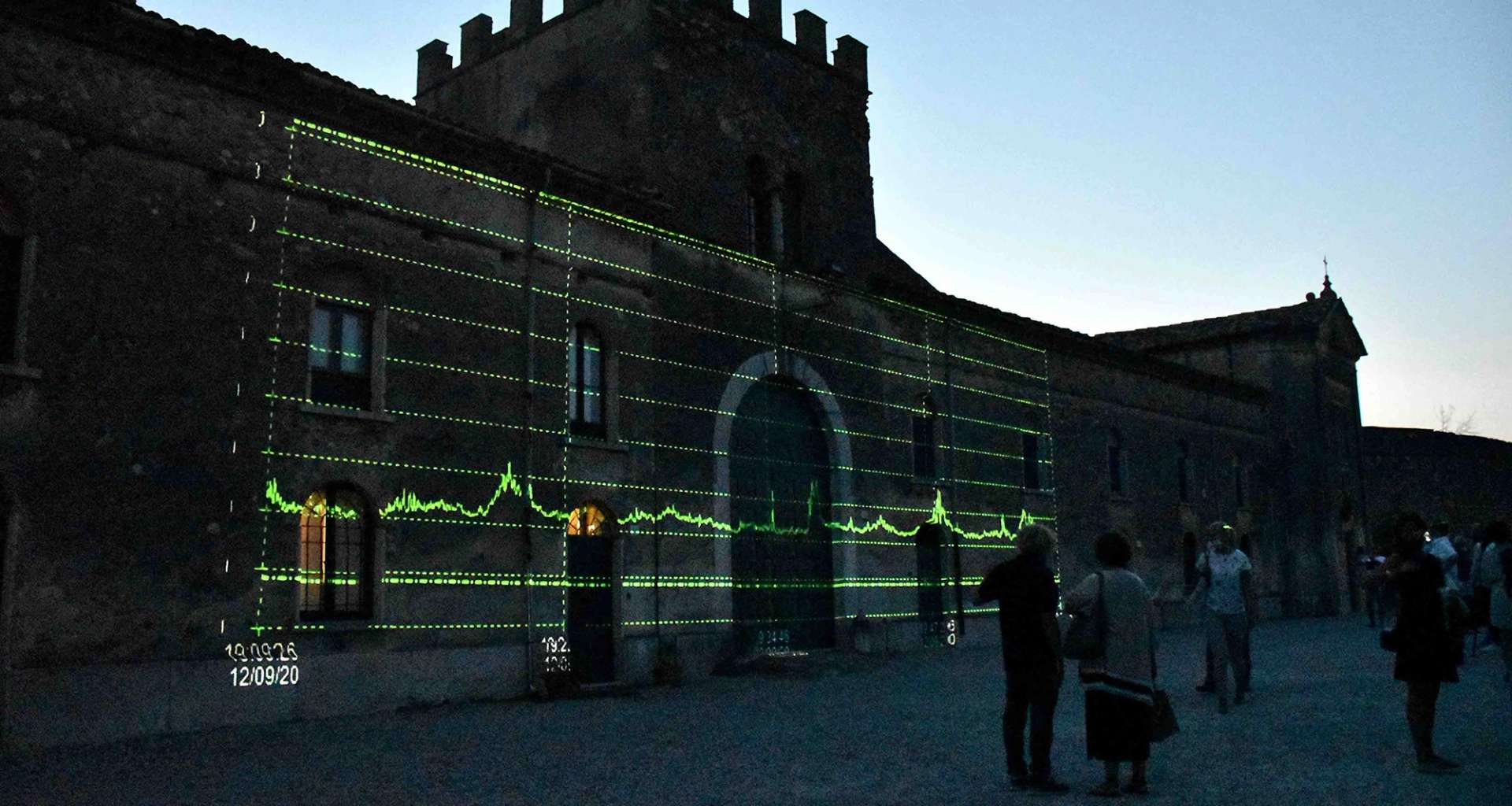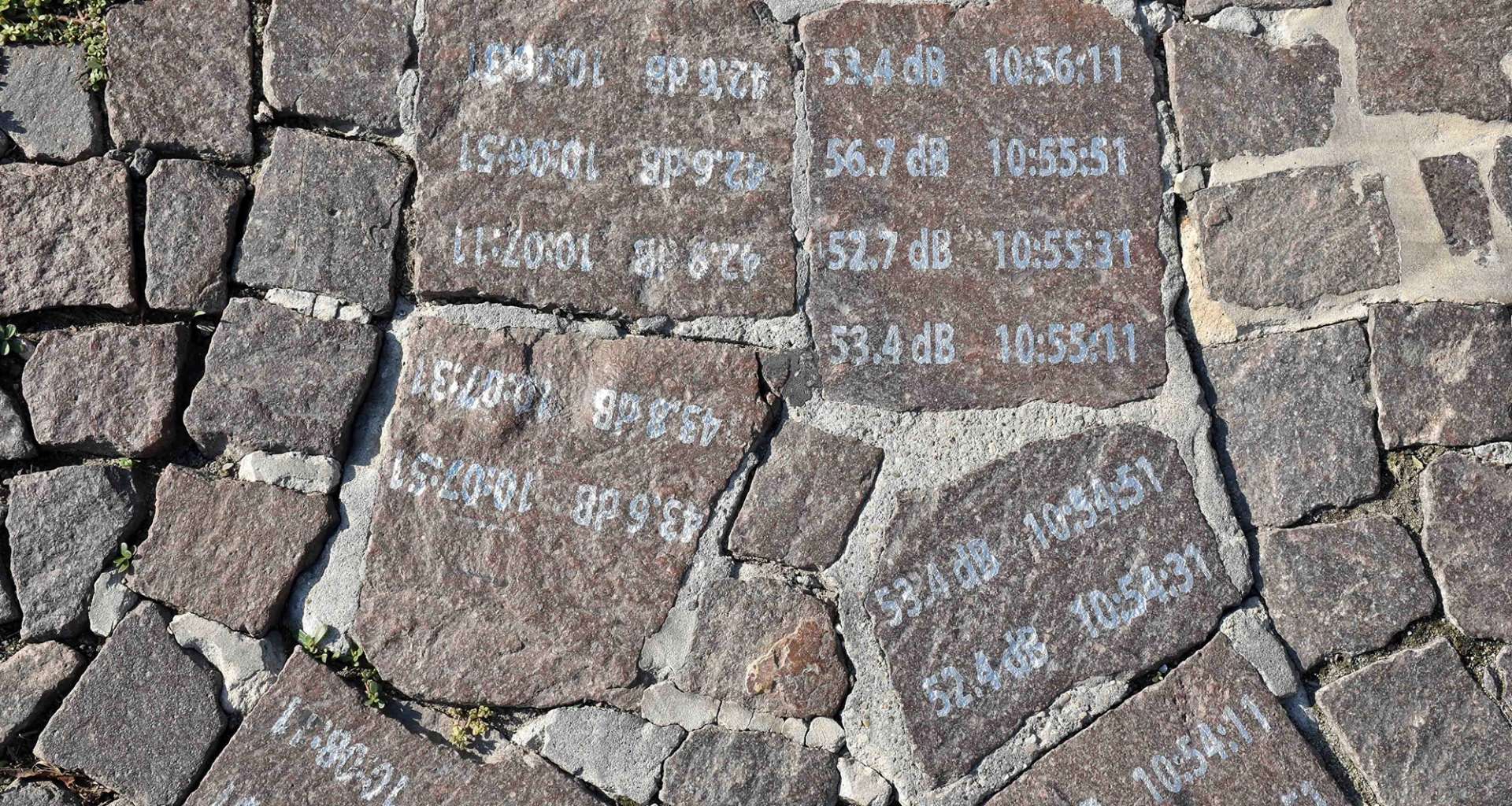Within the walls of the medieval village of Castellaro Lagusello, Baldassari’s work returns the reflection of the lake back to the village, through the echoes of sounds. Attention is given to both the perception of “suspended time” in the medieval village, and to the dimensions of the natural and urban landscape, close together and yet visually unrelated. The artist placed a phonometer near the shores of the lake, and sounds were recorded for 24 hours. But the result wasn’t limited to the auditory realm; it became visual, too. Data were transcribed in the pavement of the village’s main street, which connects the entrance tower to the lake. These data were numerical traces of a soundscape that would otherwise be enjoyed only in the immediate vicinity of the lake. The lake keeps its image hidden, yet becomes a visible presence through its “voice.” At the heart of the work is the discordance between what we hear, but cannot see, leaving much to the imagination and encouraging engaged listening.
MOVING THROUGH THE INTENSITIES OF THIS PLACE HELPED ME LISTEN TO THE FREQUENCIES OF ANOTHER TIME
The artistic journey of Clarissa Baldassarri (Civitanova, 1994), which began in 2016, is an investigation into perceptual limits. It’s an open investigation, though, in that it aspires to create a silent dialogue with those who come in contact with it. Her works don’t provide absolute solutions, but instead present the infinite possibilities in overcoming the concept of limit. Viewers can use them as aids in looking and listening beyond physical sensory barriers.
THE LAKE KEEPS ITS IMAGE HIDDEN, YET BECOMES A VISIBLE PRESENCE THROUGH ITS “VOICE.” AT THE HEART OF THE WORK IS THE DISCORDANCE BETWEEN WHAT WE HEAR, BUT CANNOT SEE, LEAVING MUCH TO THE IMAGINATION AND ENCOURAGING ENGAGED LISTENING
Castellaro Lagusello, a village belonging to the municipality of Monzambano, is located on the northern end of the province of Mantua, at the center of the imposing morainic amphitheater of Lake Garda and about ten kilometers away from Lake Garda. Settlement in the Castellaro area dates back to the Bronze Age: traces of communities were discovered on the shores of the glacial lake at the base of the hill where the fortified village has stood since the thirteenth century. One of the ten towers that guarded the village’s only access point was recently restored. It is currently open to visitors and hosts exhibitions and contemporary art installations during the tourist season.
